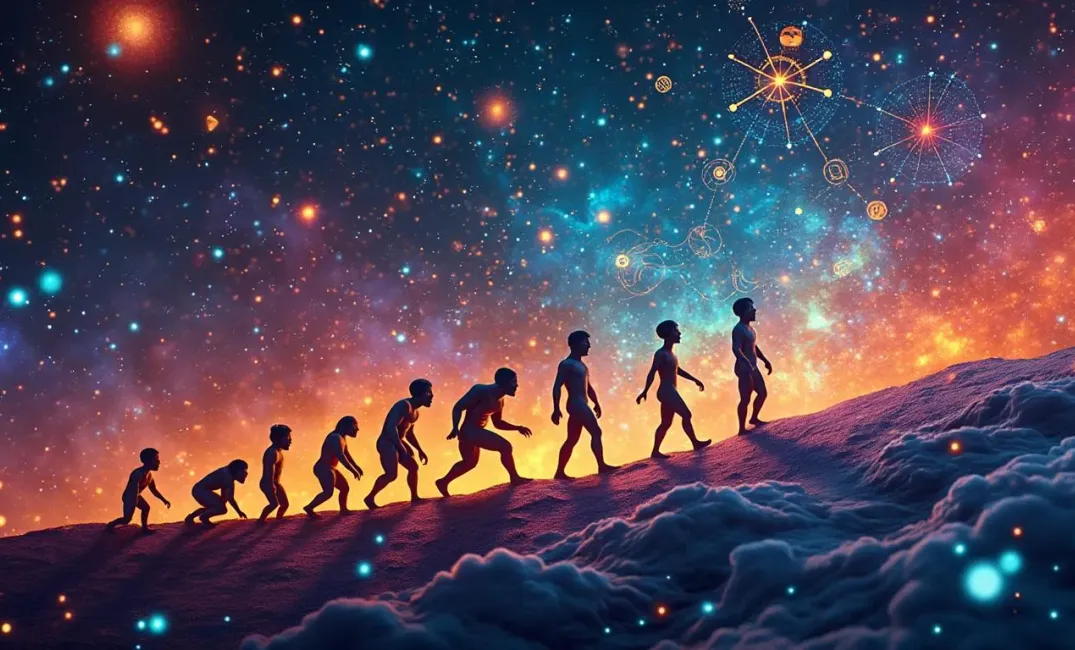Introduction: The Essence of Communication
"The single biggest problem in communication is the illusion that it has taken place." — George Bernard Shaw
Communication—the cornerstone of human civilization—has been the vibrant thread connecting souls across time and space. It is the dance of words, symbols, and gestures that breathes life into thoughts and ideas, fostering understanding and unity among individuals and societies. Today, we explore the evolution of human communication, tracing its journey from ancient cave paintings to the complex digital networks shaping our modern world.
Ancient Roots: The Birth of Expression
The Dawn of Language and Symbols
- Paleolithic Art: As one of the earliest forms of communication, cave paintings in places like Lascaux and Altamira reveal humanity's initial attempts to narrate life stories, dreams, and truths through visual artistry.
- Petroglyphs and Pictographs: These symbolic representations evolved into structured communication methods, with ancient cultures using carvings and paintings on rock surfaces to convey messages about their environment, beliefs, and daily lives.
The Inception of Written Scripts
- Cuneiform and Hieroglyphs: The Sumerians and Egyptians pioneered written communication, etching ideas onto clay tablets and papyrus, preserving knowledge, traditions, and governance for posterity.
- The Rosetta Stone: This artifact exemplifies the power of communication to bridge cultures, as its tri-lingual script unlocked the secrets of ancient Egyptian civilization.
Classical to Medieval Connections: Expanding Horizons
Alphabets and Literacy
- The Phoenician Alphabet: This script's influence marked a critical shift, facilitating trade and cultural interchange across the Mediterranean world, paving the way for Greek and Latin derivatives.
- The Gutenberg Press: Johannes Gutenberg's invention catalyzed the spread of literacy and ideas during the Renaissance, championing innovation and reshaping European societies.
Oral Traditions and Storytelling
- Epic Narratives: Cultural epics like the "Iliad," "Odyssey," and the Indian "Mahabharata" perpetuated traditions through oral storytelling, structuring narratives that resonated across generations.
- Medieval Troubadours: These lyrical poets conveyed societal news, myths, and doctrines through song, fostering cultural unity and emotional connection across feudal societies.
Revolutionary Impacts: Modern Communication Breakthroughs
The Telegraph and Telephone
- The Morse Code: Samuel Morse's innovation heralded the beginning of the telecommunication revolution, seamlessly transmitting messages across vast distances through electric signals.
- Alexander Graham Bell's Telephone: Revolutionizing instantaneous personal communication, the telephone redefined social and business interactions globally.
Print Media and the Information Age
- Newspapers and Journalism: Mass-produced newspapers gave rise to informed citizenry and fostered public discourse, while investigative journalism emerged as a force for social change.
- Radio and Television: Embracing sound and visual mediums, these technologies shrank global distances, allowing leaders like Franklin D. Roosevelt to speak directly to households, fostering national solidarity.
The Digital Revolution: Transforming Global Communication
The Internet and World Wide Web
- Digital Networks: The advent of the internet transformed communication paradigms, creating interconnected digital landscapes where information became instantaneously accessible and shareable.
- Social Media Platforms: Facebook, Twitter, and other platforms revolutionized interaction and expression, facilitating direct engagement and crafting diverse digital identities across cultures.
Information and Digital Media
- Online Journalism and Blogs: Democratizing content creation, the digital realm hosted myriad voices and perspectives, reshaping narratives and empowering independent media outlets.
- Virtual Communication Tools: Technologies like Skype and Zoom have enabled remote connection across geographical barriers, redefining how societies collaborate and sustain bonds amidst physical separation.
Navigating Future Frontiers: Communication in the Cosmic Era
The Next Phase of Connectivity
- Quantum Communication: On the horizon is the potential of quantum communication, promising unprecedented secure and instantaneous transmission across vast interstellar distances.
- Universal Language Development: Unified communication systems could break down language barriers, nurturing cross-species dialogues as humanity ventures further into the cosmos.
Ethical Considerations in Communication
- Data Privacy and Security: Navigating challenges in data protection and ethical communication will become paramount, fostering trust in digital interactions and future intelligent platforms.
- Truth and Authenticity: With misinformation's rise, societies will confront the ethical obligations inherent in disseminating truthful narratives and fostering informed global citizenries.
Conclusion: Communication as Humanity's Vessel of Connection
"Communication leads to community, that is, to understanding, intimacy and mutual valuing." — Rollo May
Communication, in its myriad forms, acts as humanity's vessel of connection—a shared tapestry weaving the tales of triumphs and trials throughout time. As humanity embarks upon its cosmic journey, the enduring power of communication will continue to be a beacon of unity and understanding, illuminating paths towards potential worlds and narratives yet untold.
In the echo of voices past, present, and future, may the ceaseless expansion of our communicative horizons guide us to nurture empathy, foster inclusion, and embrace the ever-present threads of dialogue connecting the vast tapestry of existence. As we strive towards a future where communication transcends barriers, the legacy of human expression will remain an indelible testament to the vital heartbeat of our shared journey.
HISTORY, ANCIENT SYMBOLS, TELECOMMUNICATION, ETHICS, SOCIAL MEDIA, INTERNET, FUTURE TECHNOLOGY, COMMUNICATION, DIGITAL REVOLUTION

